|
|
|
|
|
|
|
|
|
|
|
|
|
|
|
|
|
|
|
|
Writing about Decimals
|
|
|
|
|
|
|
|
|
|
|
. |
|
|
|
|
|
|
|
|
|
|
Research has shown that writing in mathematics helps students to organize
formulate
and clarify their ideas. There are many opportunities in the Decimal Squares program for writing about decimals. Students can describe these squares before decimal notation is introduced
as shown in the following examples. |
|
|
|
|
|
|
|
|
|
|
|
|
|
|
|
|
|
|
|
|
|
|
|
|
|
|
|
|
|
|
|
|
|
|
|
|
|
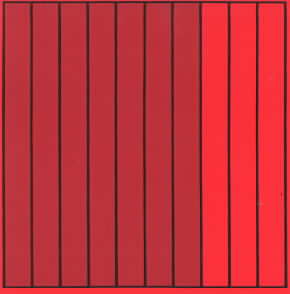 |
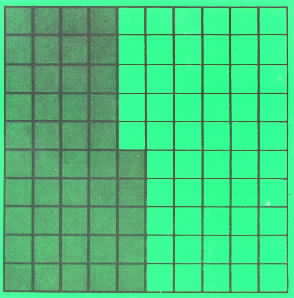 |
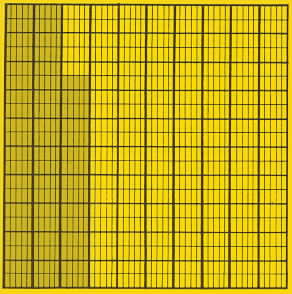 |
|
|
red square with 7 parts shaded
7 shaded parts out of 10 |
|
green square with 45 parts shaded
45 shaded parts out of 100 |
|
yellow square with 275 parts shaded
275 shaded parts out of 1000 |
|
|
|
|
|
|
|
|
|
|
. |
|
|
|
|
|
|
|
|
The Decimal Squares program has seven major topics: basic concepts
equality
inequality
and the four basic operations. Each topic has 4-6 steps in the Decimal Squares Teacher’s Guide. The first of each of these seven steps is devoted to a readiness level of activities that precede decimal notation and contains many opportunities for verbal non-symbolic descriptions. Here are a few examples.
Equality: A square with 4 shaded parts out of 10 equals a square with 40 shaded parts
out of 100;
Inequality: A square with 4 shaded parts out of 10 is greater than a square with 38
shaded parts out of 100;
Addition: 18 parts out of 100 plus 45 parts out of 100 equals 63 parts out of 100;
Subtraction: 162 parts out of 1000 minus 60 parts out of 1000 equals 102 parts out of
1000;
Multiplication: 4 times 55 parts out of 100 equals 2 whole squares and 20 parts out
of 100;
Division: 9 parts out of 10 divided by 4 parts out of 10 is approximately 2 (or between
2 and 3
or closer to 2 than to 3).
|
|
|
|
|
|
|
|
|
|
|
|
|
|
|
|
|
|
|
|
The students in the following photo are selecting random pairs of Decimal Playing Cards and writing the products. The object in this activity is to obtain the largest product. |
|
|
|
|
|
|
|
|
|
|
|
|
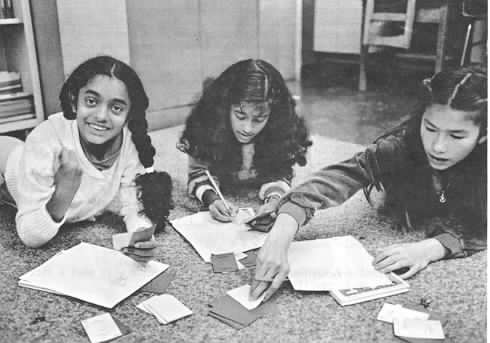 |
|
|
|
|
|
|
|
|
|
|
|
Photo courtesy of Herb Moyer |
|
|
|
|
|
|
|
|
|
|
|
|
|
|
|
|
|
|
There are also opportunities for writing about decimals in the steps beyond the readiness levels. One teacher assigned "writing sprints" by giving students a brief time
such as 2 minutes
to write about decimal operations or relations. Here are some sample questions for brief writing sessions:
1. Use a drawing to explain why .3 is equal to .30.
2. Write an explanation with diagrams to show why .19 is less than .2.
3. Sketch a Decimal Square to show that .45 ÷ .15 is equal to 3.
4. Draw a diagram to show why .2 times .3 is equal to .06. |
|
|
|
|
|
|
|
|
|
|
|
|
|
|
|
|
|
|
|
|
These students are playing a game called Bull's Eye. Six Decimal Playing cards are dealt out and the object is to use the decimals on five of these cards together with the operations of addition and subtraction to obtain the decimal on the sixth card. |
|
|
|
|
|
|
|
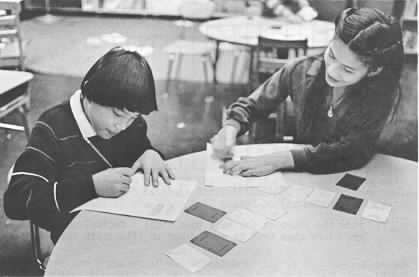 |
|
|
|
|
|
|
|
|
|
|
|
|
|
Photo courtesy of Herb Moyer |
|
|
|
|
|
|
|
|
|
|
|
|
|
|
|
There are over 30 decimal games in the Decimal Squares Teacher’s Guide and these offer rich opportunities for writing in mathematics. In some cases students have taken ownership of a game
renaming the game and revising its rules. It is natural for students to look for winning strategies in the decimal games. One teacher had each student select a game and write about their favorite strategies. This assignment required a sequence of steps including a preliminary draft
proofing and revising
and inserting the finished diagrams for "publishing" the results. |
|
|
|